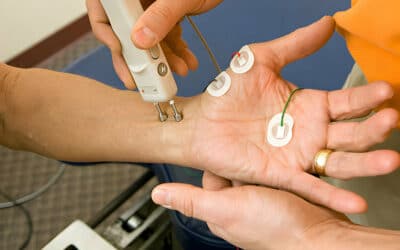Today we will go over the differences between scoliosis and kyphosis, two conditions that affect the curvature of the spine. If you’re experiencing back pain and you think that you may relate to some of the symptoms, read on to learn all about the differences between these conditions and where to receive the best care in Webster, Texas.
What are Scoliosis and Kyphosis?
On the one hand, scoliosis is a medical condition characterized by an abnormal sideways curvature of the spine. Instead of the spine being straight, it develops an “S” or “C” shape, which can cause the spine to appear curved or twisted when viewed from the back. Scoliosis can affect people of all ages, but it most commonly develops during the growth spurt just before puberty.
On the contrary, kyphosis is a medical condition characterized by an abnormal forward curvature of the spine, resulting in a rounded or hunched back. While the spine naturally has some degree of curvature, this curvature becomes excessive in the upper back, and it is referred to as kyphosis. The condition can occur at any age, but it is more commonly seen in older adults.
What are the Differences Between Scoliosis and Kyphosis
Curvature direction
In kyphosis, there is an abnormal forward curvature of the spine, resulting in a rounded or hunched back. The spine curves excessively in a backward direction. In contrast, scoliosis involves an abnormal sideways curvature of the spine, resulting in an “S” or “C” shape when viewed from the back.
Location of curvature
Kyphosis primarily affects the upper back. The excessive forward curvature typically occurs in the upper back, causing a rounded appearance. Scoliosis, on the other hand, can affect any region of the spine, including the neck, upper back, and lower back areas. The sideways curvature in scoliosis can occur at any level of the spine.
Causes
Kyphosis can have various causes, including poor posture, developmental issues, degenerative conditions, osteoporosis, or structural abnormalities. Scoliosis can also have multiple causes, including unknown, congenital, neuromuscular conditions, or other underlying factors.
Curvature patterns
Kyphosis typically results in a single excessive curve, causing a forward bend in the upper back. The spine may lose its normal rounded shape. Scoliosis, on the other hand, involves a lateral (sideways) curvature with a rotational component. It creates an “S” or “C” shape as the spine curves both to the side and rotates.
Symptoms and complications
Both kyphosis and scoliosis can cause symptoms such as back pain, stiffness, and postural changes. However, the specific symptoms and complications can vary depending on the severity, location, and underlying cause of the curvature. For example, severe kyphosis can lead to breathing difficulties due to compression of the chest cavity, while severe scoliosis can cause cosmetic concerns, spinal imbalance, and potential organ compression.
Where To Receive the Best Treatment for Kyphosis and Scoliosis in Webster, Texas
Diagnosis and appropriate management for kyphosis and scoliosis should be carried out by a healthcare professional specializing in spinal conditions, such as pain management specialist. Treatment options can include observation, physical therapy, bracing, or, in severe cases, surgical intervention tailored to the individual’s specific condition and needs.
If you are looking for treatment and diagnosis, contact Space City Pain Specialists today and start your path to a pain-free life.



